Recent figures show a drop in child obesity rates, but strong policymaking will likely be required to ensure there is longevity behind the trend
Some good news at last. After years spent scaling ever upwards, new figures from the National Child Measurement Programme (NCMP) found childhood obesity rates have fallen for the second year running.
According to the NCMP, the prevalence of obesity in reception-aged children decreased from 10.1% in 2021/22 to 9.2% in 2022/23 – the lowest level since 2014/15. And the prevalence of obesity in year six children also fell again: from 23.4% in 2021/22 to 22.7% in 2022/23, though that level is still higher than pre-Covid.
So, how significant are these figures, what do they say about health policy, and what is the future direction of travel if child obesity is to be reined in further?
In a follow up to its 2016 childhood obesity plan, the UK government set a target in 2018 to halve childhood obesity levels by 2030. And those targets are still likely to be missed, a National Audit Office report found. So while numerous campaign groups welcomed the recent drop, they were keen to keep the emphasis on the bigger picture.
“We need to look at the longer-term trends rather than year-on-year changes,” says James Toop, CEO of Bite Back 2030. “Overall, the number of children at risk from food-related ill health has increased dramatically over the past 20 years as our food environment has been flooded with junk food. Unless we take action, longer term this will keep rising.”
The recent reduction in child obesity is also unlikely to have its roots in health policy. While the launch of the soft drinks Industry Levy (SDIL) led to an estimated 45% decrease in the sugar content of soft drinks, more recent recommendations to the government’s ongoing childhood obesity plan have either been watered down or shelved.
“Measures such as the SDIL and the [HFSS] restrictions on location promotions may be starting to have an effect, but we need to keep the foot firmly on the accelerator,” says Barbara Crowther, campaign manager of the Children’s Food Campaign at Sustain.
“Unfortunately, we’ve also seen the government delay a raft of other measures, including the 9pm watershed on unhealthy food advertising, restrictions on HFSS multibuys, and the long-promised ban on sales of energy drinks to under-16s. Major cuts in public health funding at local level have also undermined local action with targeted community interventions that are known to be effective.”
“Major cuts in public health funding at local level have undermined community interventions”
With government rowing back on promises and targets, it has too often been left to individual retailers and suppliers to regulate themselves. This has led Sainsbury’s and Tesco to end HFSS multibuy offers voluntarily, despite the plans being put off until October 2025 by the government. And it was joined by Asda last month in calling for mandatory targets, as it announced new in-store trials to tackle obesity in conjunction with Nesta, a charity championing ‘social good’.
On the supplier side, too, the likes of Danone, Unilever and Nestlé also set healthier sales targets in 2023, 2022 and 2023 respectively. And Kate Halliwell, chief scientific officer at the Food & Drink Federation (FDF), notes that voluntary work “has seen FDF companies’ products contribute 13% fewer calories, 15% fewer sugars and a 24% reduction in salt to the average shopping basket than they did eight years ago”.
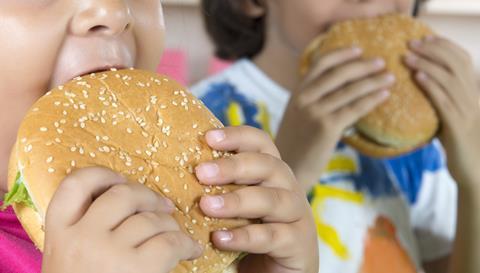
Voluntary schemes don’t work
Voluntary schemes can only go so far, however. A sugar reduction programme, introduced in 2016 as part of the government’s original childhood obesity plan, set a target for the food industry to voluntarily reduce sugar by 20% by 2020. According to a government report, the average sugar content of products under the programme fell by just 3.5% during the target period – and that figure falls to a paltry 0.2% in the out-of-home sector.
The latest voluntary measures, announced by the government in September, will see large food companies encouraged to report health-based sales data on metrics expected to include fat, salt and sugar content. Yet some are already writing off the plan as a rehash of 2011’s public health ‘Responsibility Deal’, which handed responsibility for helping improve the UK population’s health to the food industry, and has been largely seen as a failure.
Sonia Pombo, nutritionist at Action on Sugar, notes “even the announcement of mandatory restrictions on promotion of HFSS foods were starting to make waves, with companies making a headstart and finding solutions to improve the nutritional quality of their food. Voluntary measures result in only the responsible few following through, which puts them at an unfair disadvantage against their competitors who do nothing.”
The need for consistency in government policy across the sector is vital, agrees BRC assistant food director Andrea Martinez-Inchausti: “Any health-related policy should be evidence-based and consistently applied to all businesses. In most cases, that level playing field can only be achieved by making policies mandatory.”
“Eating healthily is simply unaffordable for many families across the UK right now”
One of the most striking elements of the NCMP’s figures was the finding that children living in the most deprived areas were twice as likely to be obese as those in the least deprived areas. And the cost of living crisis has only made matters worse, says Shona Goudie, policy and advocacy manager at the Food Foundation.
“Eating healthily is simply unaffordable for many families across the UK right now. In fact, the poorest fifth of the population need to spend an unrealistic 50% of their disposable income on food to afford the government-recommended healthy diet, the Eatwell Guide. This compares to just 11% of disposable income for the richest fifth.”
Sugar oversupply
Again, retailers and suppliers can only go so far. And most agree it will be through government policy that the obesity battle can be won. A good start, according to a recent joint report by Feedback Global and Action on Sugar, would be curbing the UK’s oversupply of sugar, which currently comes in at two-and-a-half times the amount required to meet the population’s maximum recommended intake.
Just over 50% of this supply comes from the 100,000 hectares of prime agricultural land – the equivalent of all vegetable crops combined – used to grow sugar in the UK. Not only does this impact topsoil and biodiversity, it helps create an excess that finds its way into the nation’s food and drink, the report points out.
According to Jessica Sinclair Taylor, one of the report’s authors and Feedback Global’s director of campaigns on diet, retail and food environments, the government’s tendency to work in silos on sugar, health and the environment is “particularly striking”. The report calls for a more integrated approach that frees up land to produce more nutritious foods, which should in turn help with issues of food security and the cost of living crisis, and reduce the health and economic implications of sugar oversupply.
Health often finds itself rubbing up against other policy, such as agriculture or trade, and coming off second best, adds Sinclair Taylor. She cites Defra and DBT as repeatedly making “active choices” that contribute to the oversupply of sugar through trade deals, and giving permission for industry to use banned pesticides when growing sugar beet.

However, the upcoming land use framework, which the government has said will be published this year, provides an opportunity to “set this right”, she adds.
“We need policymaking that doesn’t shy away from the interventions needed to cap and hold UK sugar supply at a level that is healthy for the entire population – and to do so in a way that is fair to UK growers, who need support to transition to different crops and business models,” she says.
For many campaigners, what makes the situation more frustrating is that many of the actions required to tackle childhood obesity have already been identified. According to modelling commissioned by the Recipe for Change campaign, a new industry levy on salt and sugar in food could prevent two million cases of chronic disease over 25 years, while also being worth £77.9bn to the UK economy over the same period.
The proposed levy would push companies to reformulate recipes to make products healthier, drive customers towards healthier products, and raise money that could be reinvested in improving children’s health.
The levy would work in one of two ways. First, it could be applied at a rate of £3 per kg on sugar and £6 per kg on salt that is used in manufactured foods (as well as in restaurants). It would not be applied to pure ingredients at retail, meaning home cooks would not be affected by price increases. The second proposed option would be to target the levy on products in certain non-staple food categories, using a nutrient-based or other health classification system. These categories would include crisps and other savoury snacks, confectionery, biscuits and cakes.
But “further food or drink taxes” have been given short shrift by the FDF, because it could result in “companies diverting investment in innovation and increasing food prices for consumers”, says Halliwell. She also points out that smaller companies need help with voluntary reformulation, which is “an important way companies can support consumers to make healthier choices” and cites the Scottish government-funded Reformulation for Health Programme as an intervention that has “successfully supported smaller companies to deliver recipe changes in line with public health goals”.
Nonetheless, new levies enjoy broad public support, with a May 2023 YouGov poll on behalf of the Obesity Health Alliance finding 68% of people would be in favour of the SDIL model being expanded to other unhealthy food and drink items.
“Voters want the healthy choice to be the easy choice,” says Alfred Slade, government affairs lead at the Obesity Health Alliance. “And we know what works: financially incentivising companies to put healthier products on the shelves, through measures such as the SDIL, and stopping children being bombarded with manipulative advertising. If government brings in these plans, it will have a disproportional benefit on those struggling to get by.”
“SDIL wasn’t won overnight. It required campaigners, child poverty groups, activists and progressive businesses”
Labour leader Keir Starmer has ruled out new taxes on HFSS foods, but committed to bringing in the 9pm watershed on advertising junk food should his party win power next year. And Crowther feels there is “every likelihood” we will see a “much stronger focus” on public health from any incoming government. She’s “very positive” further levies building on the success of the SDIL will eventually see the light of day, particularly given the backing of influential thinktanks.
“In the current climate, political parties are understandably cautious when it comes to any new tax measure,” she says, “but this does not mean aligning business tax incentives with healthier food is off the table for the future. Any measure that can both address obesity and bolster Treasury revenues rather than increase public spending is likely to be very attractive for an incoming government.”
It seems clear there is much agreement over the way forward. The key to uniting those voices, says Slade, is convincing politicians to buck the recent trend and follow through on progressive health and obesity policies.
“SDIL wasn’t won overnight. It required health campaigners, child poverty groups, activists like Jamie Oliver and progressive businesses like Leon to all come together to show it would work,” he says.
“The pressure that dietary-related illnesses put on the NHS and the economy makes this issue unavoidable. SDIL showed that by giving companies a clear financial incentive to change, we can make products healthier without passing on costs to consumers.”
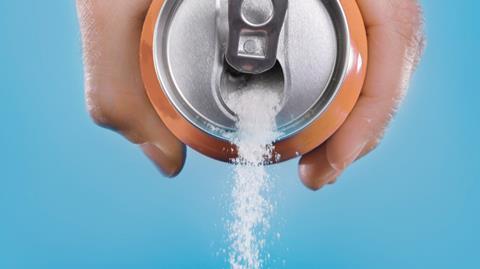
What must be done to drive childhood obesity rates down further?

“More corporations need to take public account for the role they play and question the ethics of practices such as brand advertising, sports sponsorship and the use of hugely misleading health and nutrition claims on sugary products.”
James Toop, CEO, Bite Back 2030

“We need ministers to step up, prioritise children’s health and introduce nutritious school food for all. With children in school 190 days a year… schools can guarantee children at least one healthy meal a day, but at the moment access to school food is determined by a postcode or a pay packet.”
Stephanie Slater, founder and CEO, School Food Matters

“As suppliers it’s important to consider the products we sell, whether that’s changing recipes, introducing new healthier options or reducing portion size. This goes beyond government asks to reduce sugar and salt. For example, FDF’s Action on Fibre work provided an additional 7.2 billion portions of fibre in one year.”
Kate Halliwell, chief scientific officer, FDF

“There is no one silver bullet. Many of the policy solutions are already identified; what’s needed is government commitment to implement them. The most important thing that needs to be done is increasing the affordability, availability and appeal of healthy food.”
Shona Goudie, policy and advocacy manager, Food Foundation

“The difficulty is, without clarity in how you measure it and review it, how do you know if you’ve achieved anything? I say it’s just good practice to create a level playing field. It is bound to create a conversation with branded players but that’s fine and good.”







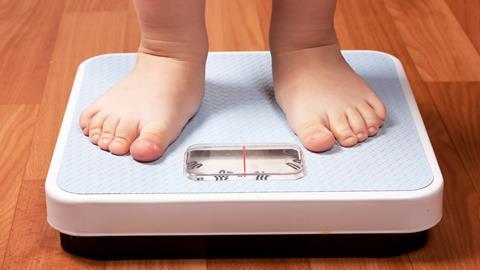
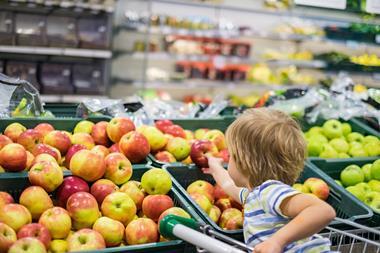
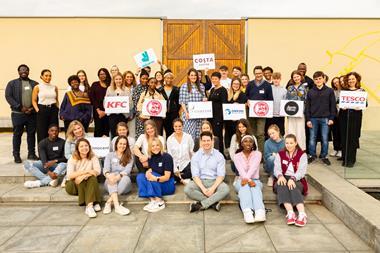










No comments yet